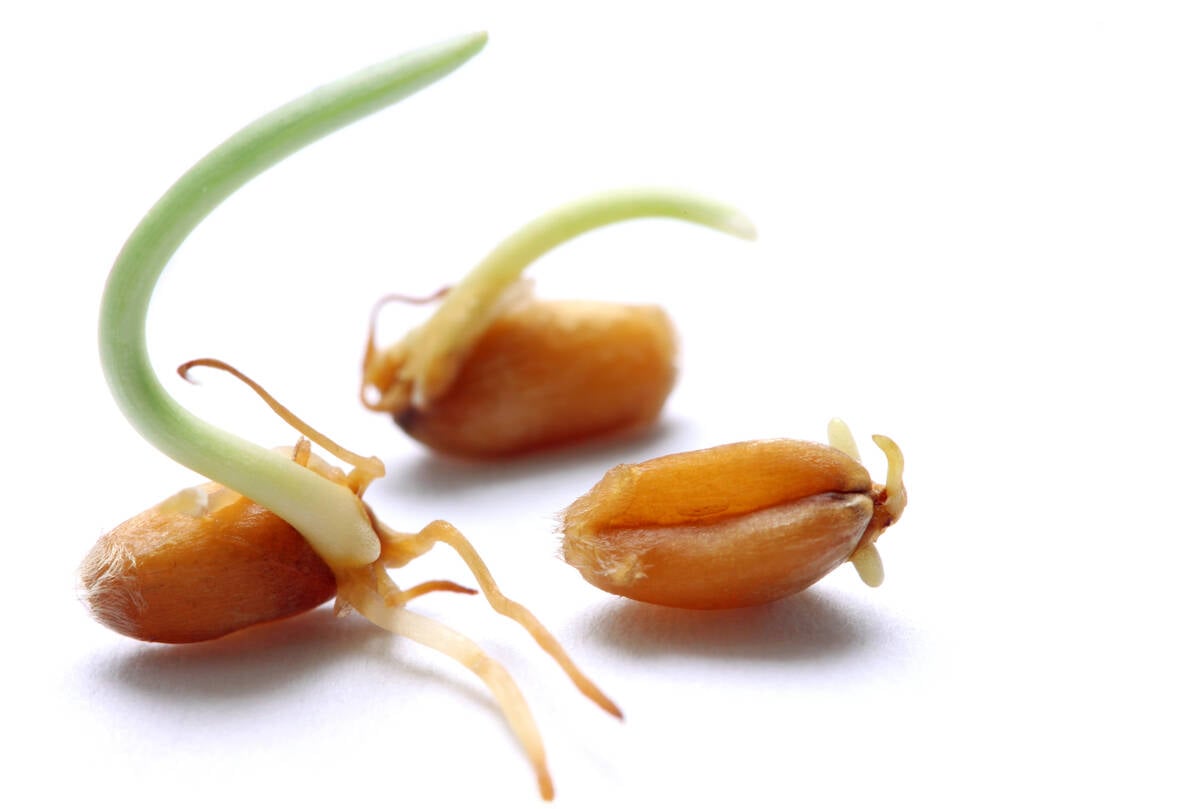A jump in exports of Canadian slaughter hogs to the United States this summer continues to raise eyebrows among American producers wondering whether there might be something more at play than market forces.
Exports of Canadian slaughter hogs to the U.S. surged this summer, a trend influenced by events such as the exchange rate between the Canadian and American dollar, the fallout from the lone case of bovine spongiform encephalopathy in an Alberta cow, and the closure of two Canadian hog slaughter plants.
But American producers are also wondering whether farm support programs may be pushing up hog production in Canada.
Read Also

Manitoba farmers fight sprouted wheat after rain
Rain in mid-September has led to wheat sprouting problems in some Manitoba farm fields.
“That’s no doubt on the radar screen for a lot of producers in the United States,” said Neil Kierks, chief executive officer of the U.S.-based National Pork Producers Council.
“Everybody is scratching their heads wondering whether Canadian producers are receiving different economic signals from what U.S. producers are receiving.”
Canada’s hog industry is well aware of the concern and is trying to prevent that from escalating into a trade rift.
Martin Rice, executive director of the Canadian Pork Council, said meetings were held with American hog industry officials earlier in September to discuss the situation.
Canada’s hog industry wants independent industry analysts to examine the rise in hog exports and to provide commentary on the factors at play.
So far, said Rice, there has been no hint from the Americans that they might pursue something like a countervailing duty against Canadian hogs.
Until late June, it was more typical for Canada to ship 25,000-35,000 head of slaughter hogs into the U.S. each week. However, there were times this summer when that number more than doubled, peaking at almost 80,000 head per week at the end of August.
“That definitely gets noticed in the U.S. industry,” Rice said.
From January through July, U.S. hog imports from Canada totalled 3.89 million head, 16 percent more than the same period last year. Of that, feeder pigs totalled 2.77 million head, an increase of 29 percent over 2002.
Springhill Farms at Neepawa, Man., closed this summer. It is expected to return to production this week so some of the pressure to export into the U.S. should be alleviated. The Springhill plant once had the capacity to handle up to 18,000 hogs per week.
However, it will take time for the plant to return to a full shift, partly because markets must be found for the pork processed there.
On the downside is a concern about the continuing effects of BSE. Aggressive marketing of beef this summer in Canada resulted in Canadians buying less pork.
There is a perception among food retailers, said Rice, that beef can be bought more cheaply, giving it an edge over pork. That perception could become more deeply entrenched if an unusually large number of cull cows are slaughtered this fall or winter to reduce the size of Canada’s cattle herd.














